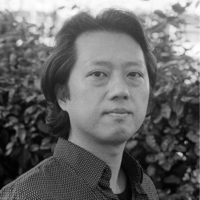Thesis Chapters by Sangheon Lee

Revue musicale OICRM, 2024
In the aftermath of the economic, political, and social turmoil of the 1960s and early 1970s, Ame... more In the aftermath of the economic, political, and social turmoil of the 1960s and early 1970s, American society was dominated, according to Christopher Lasch, by disil- lusionment, fatigue, and anxiety, leading to an obsession with living in the moment. Moreover, traditional Protestant values such as work ethic, sobriety, self-discipline, and delayed gratification were replaced by the search for instant satisfaction and for pleasure that could be had “right now”—a new, “radical” individualism. American hardcore punk emerged in suburban middle-class residential areas that epitomized the era’s conformity, while its diy ethos was justified and stimulated by this radical individualism, allowing adherents to withdraw from social and political issues and concentrate on their day-to-day personal activities. More interestingly, in their attitude and praxis, hardcore punk micro-entrepreneurs revived a significant part of the older American heritage values, most of which the 1960’s counterculture had scorned.

PhD Dissertation, 2022
(French abstract below)
Starting from the hypothesis that the rise of so-called hardcore punk roc... more (French abstract below)
Starting from the hypothesis that the rise of so-called hardcore punk rock in the United States in the late 1970s and early 1980s was not only part of a youth subculture, but, on a more profound level, linked to a certain context and to the psycho-social situation in which American society found itself at the time, this study questions what is the nature of the link between the strictly musical details of this expression and the situation in which it took place, by way of suggesting two notions: “urgency” and “nihilism”.
While hardcore punk has received increasing attention over the past two decades, musicologists have yet to do justice to the music. Considering this gap, this research aims first of all to clarify the music itself of this hardcore punk phenomenon, and further, with a view to deciphering the social dimension of this music, based on a scrupulous analysis of “musical materials,” which has been historically established throughout the evolution of what we call guitar-driven short fast rock songs, dating back to Chuck Berry of the 1950s: 3-3-2 rhythmic figure, double stop, power chord, call-response form, verse-chorus alternation and horizontal form, refrain, palm mute and even the composition of a band.
In hardcore punk, “nihilistic creation”, with its “urgency,” is not just about the process that pushes musicians towards a certain act of creation: it is the music itself that embodies this nihilism and its urgency within its own formal structure. The “dialectical collaboration” of the two notions connects thereby music and social situation as a mediating link.
Résumé
Partant de l’hypothèse que l’essor de la musique dite punk hardcore, aux États-Unis à la fin des années 1970 et au début des années 1980, n’était pas seulement le résultat d’une sous- culture de jeunes, mais était, bien plus profondément, liée à un certain contexte et à la situation psycho-sociale où se trouvait toute la société américaine d’alors, nous recherchons quelle est la nature du lien entre les modalités proprement musicales de cette expression et la situation où elle s’exprimait en nous appuyant sur deux notions : « urgence » et « nihilisme ».
Si le punk hardcore a fait l’objet d’une attention croissante au cours des vingt dernières années, les musicologues n’ont encore guère rendu justice à cette musique. Prenant acte de cette lacune, notre étude vise d’abord à une mise au point quant à la musique du phénomène punk hardcore, et ceci aussi, en outre, en vue de décrypter la dimension sociale de cette musique elle- même à partir d’une analyse scrupuleuse des « matériaux musicaux » eux-mêmes, au sens d’Adorno, qui s’établit historiquement au long de l’évolution de ce que nous nommons chansons rock courtes et rapides emmenées par la guitare, évolution qui remonte au Chuck Berry des années 1950 : la figure rythmique 3-3-2, les doubles cordes, le power chord, la forme appel-réponse, l’alternance couplet-refrain et la forme horizontale, le palm mute et même la composition du groupe.
Dans le punk hardcore, la « création nihiliste », avec son « urgence », ne concerne pas seulement le processus qui pousse les musiciens à l’acte de créer : c’est la musique elle-même qui incarne ce nihilisme et son urgence au sein même de sa propre structure formelle. La « collaboration dialectique » des deux notions relie ainsi, comme un lien médiateur, musique et situation sociale.
Conference Presentations by Sangheon Lee

The late 2010s witnessed a surge in global popularity for a growing number of Russian and Belarus... more The late 2010s witnessed a surge in global popularity for a growing number of Russian and Belarusian post-punk bands, or more precisely, 'Cold Wave' bands, driven in part by the international success of Molchat Doma from Belarus. The post-Soviet Cold Wave genre is influenced not only by 1980s UK post-punk bands such as The Cure, Joy Division, and Depeche Mode but also, more significantly, by Kino, the legendary Soviet band that epitomized youth music culture during the perestroika era (1985-1991). Most of these post-Soviet Cold Wave bands cite Kino as their most important influence. Western popular music scholars have often overlooked Kino's pivotal role in Russian rock, instead focusing on avant-garde bands or those with overtly radical political stances (Yoffe and Laing 2005). Kino's music, characterized by its simplicity and repetition, has not received adequate musicological analysis in terms of its specific forms and features. However, Kino presents a compelling subject for study due to its deliberate departure from the 'romantic' and purist ideology of Russian rock, appropriating the post-punk/Cold Wave musical approach. This paper seeks to expand and refine Richard Middleton’s concepts of "discursive repetition" and "musematic repetition," applying them to differentiate the musical characteristics and narrative structures of Kino (and post-Soviet Cold Wave bands) from those of contemporary UK Cold Wave bands. How does 'discursivity' manifest in Kino's music, particularly in its use of electric guitar, melodic structures, and the overall temporal framework of their songs? In what ways does this distinguish their music from that of UK bands?

The emergence of punk rock and its evolution draw a parallel with the height of “the era of nihil... more The emergence of punk rock and its evolution draw a parallel with the height of “the era of nihilism”, another name for post-modernism, and the beginning of “the era of melancholy” where we live now (Iwauchi Shotaro 2019). While the “nihilist” not only observes and experiences losing higher values, meaning, and meta-narrative, but also annihilates and negates them, the “melancholist”, who cannot even come up with a ‘great’ meaning or goal itself that has already collapsed, takes on a different sense of existence: “It’s not that I want to do something, but neither is it that I don’t want to do anything.”
On the other hand, in the late 70’s, Christopher Lasch observed a new individualism of people “living for the moment” and “losing the sense of historical continuity”, due to disillusion with what had been presented in the political and social turmoil of the ‘60s and the economic crisis of the ‘70s, which I call “double break”, i.e., with the past and with the future.
The music of the early American punk and hardcore embodies, I believe, such a consciousness that pervaded the whole society into the very short length of musical time with its unique vertical and horizontal structure, which is illustrated in this paper with some examples and their graphic presentations. Finally, if there is a recurring but hidden theme in the musical evolution of punk rock, would it be its allusion to the possibility that one can live beyond traditional, historical, and teleological time?

L’essor de la musique dite punk hardcore, aux États-Unis à la fin des années 1970 et au début des... more L’essor de la musique dite punk hardcore, aux États-Unis à la fin des années 1970 et au début des années 1980, n’était pas seulement le résultat d’une sous-culture de jeunes, mais était, bien plus profondément, lié à un certain contexte et à la situation psychosociale où se trouvait toute la société étatsunienne d’alors. Nous recherchons ici quelle est la nature du lien entre les modalités proprement musicales de cette expression et la situation où elle s’exprimait, en nous appuyant sur deux notions : « urgence » et « nihilisme ».
Si le punk hardcore a fait l’objet d’une attention croissante au cours des vingt dernières années, les musicologues n’ont encore guère rendu justice à cette musique. Prenant acte de cette lacune, nous visons à décrypter sa dimension sociale à partir d’une analyse scrupuleuse les « matériaux musicaux » eux-mêmes de certains morceaux représentatifs.
L’urgence dans le punk hardcore ne repose pas seulement sur l’uniformisation des accents ou l’augmentation de la vitesse, comme précédemment dans le rock en général, mais en outre sur une accélération subtile, sur une précipitation spontanée. Le phénomène d’accumulation verticale qui caractérisait le punk rock a été radicalisé par le punk hardcore : comme « sloganisation », contraste, raccourcissement, parfois décalage temporel et temporaire. Si jamais une « création nihiliste » est encore possible dans la négation radicale de toute ambition « artistique », on n’en peut guère trouver meilleur exemple que le punk hardcore : on y trouve souvent cette « conscience nihiliste », elle s’y présente sous forme horizontale dans la chanson.
Dans le punk hardcore, c’est la musique elle-même qui incarne ce nihilisme et son urgence, au sein même de sa propre structure formelle. La collaboration dialectique des deux notions d’urgence et de nihilisme relie, comme un lien médiateur, musique et situation sociale.

After the unprecedented political, social, and cultural turmoil of the sixties and the economic (... more After the unprecedented political, social, and cultural turmoil of the sixties and the economic (and political) crisis of the early seventies, American society witnessed the prevailing disillusionment and the weakened sense of historical continuity and collective memory. The resulting new form of radical individualism—further at odds with the tenets and values of traditional puritanism—sought to focus on needs and desires that could be met “right now”, both physically and psychically.
This paper explores the musical and cultural expressions of the early American hardcore punk—which emerged then as a rebellion against this new form of hedonism and conformism, and at the same time due to disillusionment with the “idealistic” counterculture of the sixties—focusing on a dialectic that can be deduced from two different observations: first, the very propensities of mainstream culture described above were in fact embodied by hardcore punk, paradoxically, but in a more specific fashion (we call it “urgency” and “nihilism”). On the other hand, it tended to rely on some of the tenets of puritanism, i.e. work ethic, “self-made man”, self-discipline, sobriety, and deferred gratification, as is the case for some seminal bands: Black Flag from Southern California and Minor Threat from Washington DC.

From the beginning, punk rock has been employing a certain “sloganization” as a means of writing ... more From the beginning, punk rock has been employing a certain “sloganization” as a means of writing lyrics and composition, in which the ‘target’ of the song—often its title—is compressed into a small number of words and usually repeated within a very short interval. As Grail Marcus describes about the vocal delivery of punk rock, the words “must be said fast”, before the energy, or the opportunity, to express them disappears—because there is no future available (Marcus 1995). Indeed, the extreme repetition of a few words and musical elements, in such an extent that it seems to despise and mock any artistic device or idealistic ambition, is sometimes accompanied by a certain temporal irregularity and instability—subtle acceleration or, less often, deceleration—be it implemented deliberately, spontaneously or accidentally, as if reflecting the content of the lyrics.
This paradoxical combination of urgency and nihilism (Lee 2022) crystallized as a distinctive style of songwriting with the advent of hardcore punk and its more extreme subgenres. Not only was hardcore punk a “harder, faster, louder” version of punk rock, as is often defined somewhat pejoratively, but also it evolved, more importantly, to a new form of expression of words: the combination of extreme brevity, speed and distortion in vocal delivery goes so far as to lead to a considerable ‘retreat’ on the semantic level of the words, which thwarts, paradoxically, the very purpose of the sloganization of key words, which is on the contrary to be easily intelligible. However, this semantic reduction allows to acquire another type of utterance by opening its “performative” dimension in the linguistic sense of the term (e.g., “I insist”): apart from the semantic content of the lyrics, the act of utterance itself embodies the content.
We aim to explore this phenomenon by analyzing some songs from early DC hardcore punk bands (Bad Brains, Teen Idles and Untouchables) and others from the first recording by D.R.I., a band from Houston, Texas, the latter foreshadowing more extreme subgenres of hardcore punk. Needless to say, this phenomenon was not the prerogative of American punk rock.









Uploads
Thesis Chapters by Sangheon Lee
Starting from the hypothesis that the rise of so-called hardcore punk rock in the United States in the late 1970s and early 1980s was not only part of a youth subculture, but, on a more profound level, linked to a certain context and to the psycho-social situation in which American society found itself at the time, this study questions what is the nature of the link between the strictly musical details of this expression and the situation in which it took place, by way of suggesting two notions: “urgency” and “nihilism”.
While hardcore punk has received increasing attention over the past two decades, musicologists have yet to do justice to the music. Considering this gap, this research aims first of all to clarify the music itself of this hardcore punk phenomenon, and further, with a view to deciphering the social dimension of this music, based on a scrupulous analysis of “musical materials,” which has been historically established throughout the evolution of what we call guitar-driven short fast rock songs, dating back to Chuck Berry of the 1950s: 3-3-2 rhythmic figure, double stop, power chord, call-response form, verse-chorus alternation and horizontal form, refrain, palm mute and even the composition of a band.
In hardcore punk, “nihilistic creation”, with its “urgency,” is not just about the process that pushes musicians towards a certain act of creation: it is the music itself that embodies this nihilism and its urgency within its own formal structure. The “dialectical collaboration” of the two notions connects thereby music and social situation as a mediating link.
Résumé
Partant de l’hypothèse que l’essor de la musique dite punk hardcore, aux États-Unis à la fin des années 1970 et au début des années 1980, n’était pas seulement le résultat d’une sous- culture de jeunes, mais était, bien plus profondément, liée à un certain contexte et à la situation psycho-sociale où se trouvait toute la société américaine d’alors, nous recherchons quelle est la nature du lien entre les modalités proprement musicales de cette expression et la situation où elle s’exprimait en nous appuyant sur deux notions : « urgence » et « nihilisme ».
Si le punk hardcore a fait l’objet d’une attention croissante au cours des vingt dernières années, les musicologues n’ont encore guère rendu justice à cette musique. Prenant acte de cette lacune, notre étude vise d’abord à une mise au point quant à la musique du phénomène punk hardcore, et ceci aussi, en outre, en vue de décrypter la dimension sociale de cette musique elle- même à partir d’une analyse scrupuleuse des « matériaux musicaux » eux-mêmes, au sens d’Adorno, qui s’établit historiquement au long de l’évolution de ce que nous nommons chansons rock courtes et rapides emmenées par la guitare, évolution qui remonte au Chuck Berry des années 1950 : la figure rythmique 3-3-2, les doubles cordes, le power chord, la forme appel-réponse, l’alternance couplet-refrain et la forme horizontale, le palm mute et même la composition du groupe.
Dans le punk hardcore, la « création nihiliste », avec son « urgence », ne concerne pas seulement le processus qui pousse les musiciens à l’acte de créer : c’est la musique elle-même qui incarne ce nihilisme et son urgence au sein même de sa propre structure formelle. La « collaboration dialectique » des deux notions relie ainsi, comme un lien médiateur, musique et situation sociale.
Conference Presentations by Sangheon Lee
On the other hand, in the late 70’s, Christopher Lasch observed a new individualism of people “living for the moment” and “losing the sense of historical continuity”, due to disillusion with what had been presented in the political and social turmoil of the ‘60s and the economic crisis of the ‘70s, which I call “double break”, i.e., with the past and with the future.
The music of the early American punk and hardcore embodies, I believe, such a consciousness that pervaded the whole society into the very short length of musical time with its unique vertical and horizontal structure, which is illustrated in this paper with some examples and their graphic presentations. Finally, if there is a recurring but hidden theme in the musical evolution of punk rock, would it be its allusion to the possibility that one can live beyond traditional, historical, and teleological time?
Si le punk hardcore a fait l’objet d’une attention croissante au cours des vingt dernières années, les musicologues n’ont encore guère rendu justice à cette musique. Prenant acte de cette lacune, nous visons à décrypter sa dimension sociale à partir d’une analyse scrupuleuse les « matériaux musicaux » eux-mêmes de certains morceaux représentatifs.
L’urgence dans le punk hardcore ne repose pas seulement sur l’uniformisation des accents ou l’augmentation de la vitesse, comme précédemment dans le rock en général, mais en outre sur une accélération subtile, sur une précipitation spontanée. Le phénomène d’accumulation verticale qui caractérisait le punk rock a été radicalisé par le punk hardcore : comme « sloganisation », contraste, raccourcissement, parfois décalage temporel et temporaire. Si jamais une « création nihiliste » est encore possible dans la négation radicale de toute ambition « artistique », on n’en peut guère trouver meilleur exemple que le punk hardcore : on y trouve souvent cette « conscience nihiliste », elle s’y présente sous forme horizontale dans la chanson.
Dans le punk hardcore, c’est la musique elle-même qui incarne ce nihilisme et son urgence, au sein même de sa propre structure formelle. La collaboration dialectique des deux notions d’urgence et de nihilisme relie, comme un lien médiateur, musique et situation sociale.
This paper explores the musical and cultural expressions of the early American hardcore punk—which emerged then as a rebellion against this new form of hedonism and conformism, and at the same time due to disillusionment with the “idealistic” counterculture of the sixties—focusing on a dialectic that can be deduced from two different observations: first, the very propensities of mainstream culture described above were in fact embodied by hardcore punk, paradoxically, but in a more specific fashion (we call it “urgency” and “nihilism”). On the other hand, it tended to rely on some of the tenets of puritanism, i.e. work ethic, “self-made man”, self-discipline, sobriety, and deferred gratification, as is the case for some seminal bands: Black Flag from Southern California and Minor Threat from Washington DC.
This paradoxical combination of urgency and nihilism (Lee 2022) crystallized as a distinctive style of songwriting with the advent of hardcore punk and its more extreme subgenres. Not only was hardcore punk a “harder, faster, louder” version of punk rock, as is often defined somewhat pejoratively, but also it evolved, more importantly, to a new form of expression of words: the combination of extreme brevity, speed and distortion in vocal delivery goes so far as to lead to a considerable ‘retreat’ on the semantic level of the words, which thwarts, paradoxically, the very purpose of the sloganization of key words, which is on the contrary to be easily intelligible. However, this semantic reduction allows to acquire another type of utterance by opening its “performative” dimension in the linguistic sense of the term (e.g., “I insist”): apart from the semantic content of the lyrics, the act of utterance itself embodies the content.
We aim to explore this phenomenon by analyzing some songs from early DC hardcore punk bands (Bad Brains, Teen Idles and Untouchables) and others from the first recording by D.R.I., a band from Houston, Texas, the latter foreshadowing more extreme subgenres of hardcore punk. Needless to say, this phenomenon was not the prerogative of American punk rock.
Starting from the hypothesis that the rise of so-called hardcore punk rock in the United States in the late 1970s and early 1980s was not only part of a youth subculture, but, on a more profound level, linked to a certain context and to the psycho-social situation in which American society found itself at the time, this study questions what is the nature of the link between the strictly musical details of this expression and the situation in which it took place, by way of suggesting two notions: “urgency” and “nihilism”.
While hardcore punk has received increasing attention over the past two decades, musicologists have yet to do justice to the music. Considering this gap, this research aims first of all to clarify the music itself of this hardcore punk phenomenon, and further, with a view to deciphering the social dimension of this music, based on a scrupulous analysis of “musical materials,” which has been historically established throughout the evolution of what we call guitar-driven short fast rock songs, dating back to Chuck Berry of the 1950s: 3-3-2 rhythmic figure, double stop, power chord, call-response form, verse-chorus alternation and horizontal form, refrain, palm mute and even the composition of a band.
In hardcore punk, “nihilistic creation”, with its “urgency,” is not just about the process that pushes musicians towards a certain act of creation: it is the music itself that embodies this nihilism and its urgency within its own formal structure. The “dialectical collaboration” of the two notions connects thereby music and social situation as a mediating link.
Résumé
Partant de l’hypothèse que l’essor de la musique dite punk hardcore, aux États-Unis à la fin des années 1970 et au début des années 1980, n’était pas seulement le résultat d’une sous- culture de jeunes, mais était, bien plus profondément, liée à un certain contexte et à la situation psycho-sociale où se trouvait toute la société américaine d’alors, nous recherchons quelle est la nature du lien entre les modalités proprement musicales de cette expression et la situation où elle s’exprimait en nous appuyant sur deux notions : « urgence » et « nihilisme ».
Si le punk hardcore a fait l’objet d’une attention croissante au cours des vingt dernières années, les musicologues n’ont encore guère rendu justice à cette musique. Prenant acte de cette lacune, notre étude vise d’abord à une mise au point quant à la musique du phénomène punk hardcore, et ceci aussi, en outre, en vue de décrypter la dimension sociale de cette musique elle- même à partir d’une analyse scrupuleuse des « matériaux musicaux » eux-mêmes, au sens d’Adorno, qui s’établit historiquement au long de l’évolution de ce que nous nommons chansons rock courtes et rapides emmenées par la guitare, évolution qui remonte au Chuck Berry des années 1950 : la figure rythmique 3-3-2, les doubles cordes, le power chord, la forme appel-réponse, l’alternance couplet-refrain et la forme horizontale, le palm mute et même la composition du groupe.
Dans le punk hardcore, la « création nihiliste », avec son « urgence », ne concerne pas seulement le processus qui pousse les musiciens à l’acte de créer : c’est la musique elle-même qui incarne ce nihilisme et son urgence au sein même de sa propre structure formelle. La « collaboration dialectique » des deux notions relie ainsi, comme un lien médiateur, musique et situation sociale.
On the other hand, in the late 70’s, Christopher Lasch observed a new individualism of people “living for the moment” and “losing the sense of historical continuity”, due to disillusion with what had been presented in the political and social turmoil of the ‘60s and the economic crisis of the ‘70s, which I call “double break”, i.e., with the past and with the future.
The music of the early American punk and hardcore embodies, I believe, such a consciousness that pervaded the whole society into the very short length of musical time with its unique vertical and horizontal structure, which is illustrated in this paper with some examples and their graphic presentations. Finally, if there is a recurring but hidden theme in the musical evolution of punk rock, would it be its allusion to the possibility that one can live beyond traditional, historical, and teleological time?
Si le punk hardcore a fait l’objet d’une attention croissante au cours des vingt dernières années, les musicologues n’ont encore guère rendu justice à cette musique. Prenant acte de cette lacune, nous visons à décrypter sa dimension sociale à partir d’une analyse scrupuleuse les « matériaux musicaux » eux-mêmes de certains morceaux représentatifs.
L’urgence dans le punk hardcore ne repose pas seulement sur l’uniformisation des accents ou l’augmentation de la vitesse, comme précédemment dans le rock en général, mais en outre sur une accélération subtile, sur une précipitation spontanée. Le phénomène d’accumulation verticale qui caractérisait le punk rock a été radicalisé par le punk hardcore : comme « sloganisation », contraste, raccourcissement, parfois décalage temporel et temporaire. Si jamais une « création nihiliste » est encore possible dans la négation radicale de toute ambition « artistique », on n’en peut guère trouver meilleur exemple que le punk hardcore : on y trouve souvent cette « conscience nihiliste », elle s’y présente sous forme horizontale dans la chanson.
Dans le punk hardcore, c’est la musique elle-même qui incarne ce nihilisme et son urgence, au sein même de sa propre structure formelle. La collaboration dialectique des deux notions d’urgence et de nihilisme relie, comme un lien médiateur, musique et situation sociale.
This paper explores the musical and cultural expressions of the early American hardcore punk—which emerged then as a rebellion against this new form of hedonism and conformism, and at the same time due to disillusionment with the “idealistic” counterculture of the sixties—focusing on a dialectic that can be deduced from two different observations: first, the very propensities of mainstream culture described above were in fact embodied by hardcore punk, paradoxically, but in a more specific fashion (we call it “urgency” and “nihilism”). On the other hand, it tended to rely on some of the tenets of puritanism, i.e. work ethic, “self-made man”, self-discipline, sobriety, and deferred gratification, as is the case for some seminal bands: Black Flag from Southern California and Minor Threat from Washington DC.
This paradoxical combination of urgency and nihilism (Lee 2022) crystallized as a distinctive style of songwriting with the advent of hardcore punk and its more extreme subgenres. Not only was hardcore punk a “harder, faster, louder” version of punk rock, as is often defined somewhat pejoratively, but also it evolved, more importantly, to a new form of expression of words: the combination of extreme brevity, speed and distortion in vocal delivery goes so far as to lead to a considerable ‘retreat’ on the semantic level of the words, which thwarts, paradoxically, the very purpose of the sloganization of key words, which is on the contrary to be easily intelligible. However, this semantic reduction allows to acquire another type of utterance by opening its “performative” dimension in the linguistic sense of the term (e.g., “I insist”): apart from the semantic content of the lyrics, the act of utterance itself embodies the content.
We aim to explore this phenomenon by analyzing some songs from early DC hardcore punk bands (Bad Brains, Teen Idles and Untouchables) and others from the first recording by D.R.I., a band from Houston, Texas, the latter foreshadowing more extreme subgenres of hardcore punk. Needless to say, this phenomenon was not the prerogative of American punk rock.